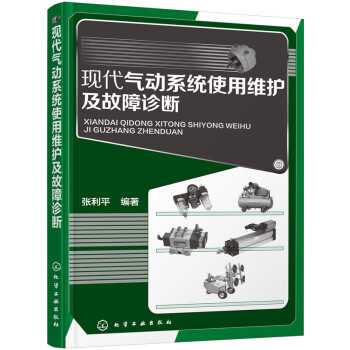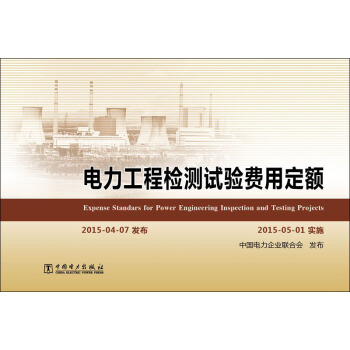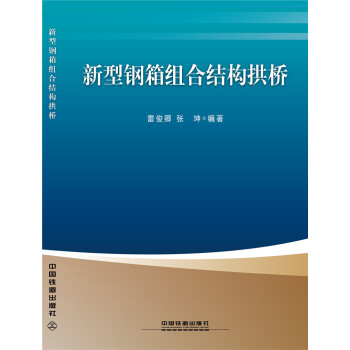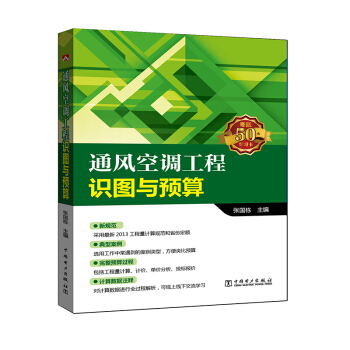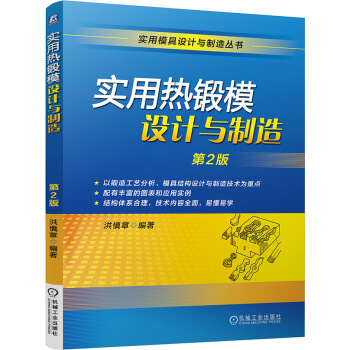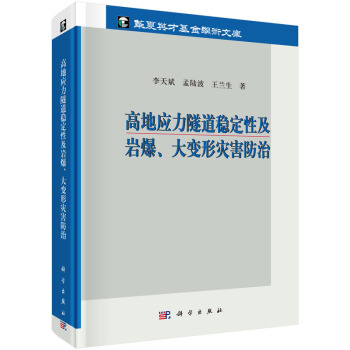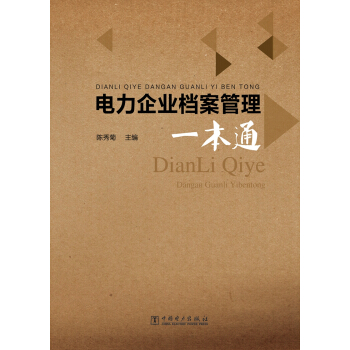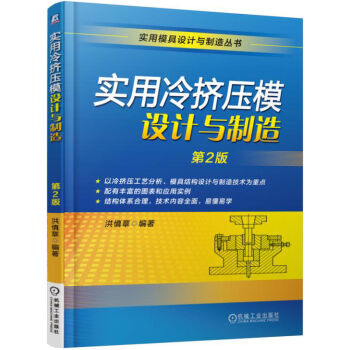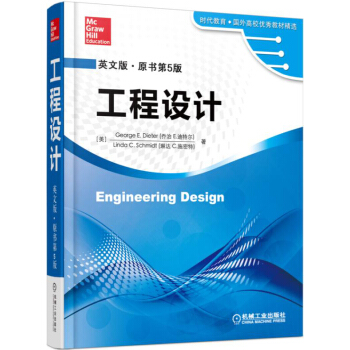

具體描述
內容簡介
《工程設計 Engineering Design(英文版 原書第5版)》係統介紹瞭工程設計領域的相關知識,其主要內容不僅包括瞭類似書籍涵蓋的産品開發過程、概念生成、實體設計、詳細設計等知識,也包括瞭該書獨有的麵嚮可持續性與環境的設計、材料的選用、麵嚮製造的設計,以及成本評估、決策學等知識。目錄
序Preface to Fifth Edition/第5版前言 xiii
Chapter 1 Engineering Design/工程設計 1
1.1 Introduction/引言 1
1.2 Engineering Design Process/工程設計過程 3
1.3 Ways to Think about the Engineering Design Process/工程
設計過程的思路 6
1.4 Description of Design Process/設計過程描述 14
1.5 Considerations of a Good Design/優秀設計的考慮因素 17
1.6 Computer-Aided Engineering/計算機輔助工程 22
1.7 Designing to Codes and Standards/遵守規範與標準的設計 24
1.8 Design Review/設計評審 26
1.9 Societal Considerations in Engineering Design/工程設計
應考慮的社會因素 28
1.10 Summary/本章小結 32
New Terms and Concepts/新術語和概念 33
Bibliography/參考文獻 33
Problems and Exercises/問題與練習 33
Chapter 2 Product Development Process/産品開發過程 36
2.1 Introduction/引言 36
2.2 Product Development Process/産品開發過程 36
2.3 Product and Process Cycles/産品與工藝周期 44
2.4 Organization for Design and Product Development/設計與産品
開發組織 48
2.5 Markets and Marketing/市場與營銷 55
2.6 Technological Innovation/技術創新 61
2.7 Summary/本章小結 66
New Terms and Concepts/新術語和概念 67
Bibliography/參考文獻 67
Problems and Exercises/問題與練習 67
Chapter 3 Problem Definition and Need Identification/問題定義和
需求識彆 70
3.1 Introduction/引言 70
3.2 Identifying Customer Needs/識彆客戶需要 72
3.3 Customer Requirements/客戶需求 80
3.4 Gathering Information on Existing Products/收集現有産品
信息 86
3.5 Establishing the Engineering Characteristics/建立工程特性 94
3.6 Quality Function Deployment/質量功能配置 99
3.7 Product Design Specification/産品設計說明書 111
3.8 Summary/本章小結 113
New Terms and Concepts/新術語和概念 115
Bibliography/參考文獻 115
Problems and Exercises/問題與練習 116
Chapter 4 Team Behavior and Tools/團隊行為和工具 118
4.1 Introduction/引言 118
4.2 What It Means to be an Effective Team Member/何謂有效團隊
成員 119
4.3 Team Leadership Roles/團隊的領導角色 120
4.4 Team Dynamics/團隊動力學 121
4.5 Effective Team Meetings/有效的團隊會議 123
4.6 Problem-Solving Tools/解決問題的工具 125
4.7 Time Management/時間管理 144
4.8 Planning and Scheduling/規劃和進度安排 146
4.9 Summary/本章小結 154
New Terms and Concepts/新術語和概念 154
Bibliography/參考文獻 155
Problems and Exercises/問題與練習 155
Chapter 5 Gathering Information/信息收集 158
5.1 The Information Challenge/信息的挑戰 158
5.2 Types of Design Information/設計信息的分類 160
5.3 Sources of Design Information/設計信息源 161
5.4 Summary/本章小結 164
New Terms and Concepts/新術語和概念 164
Bibliography/參考文獻 164
Problems and Exercises/問題與練習 164
Chapter 6 Concept Generation/概念生成 166
6.1 Introduction to Creative Thinking/創造性思維的介紹 167
6.2 Creativity and Problem Solving/創造性和問題求解 171
6.3 Creative Thinking Methods/創造性思維方法 177
6.4 Creative Methods for Design/設計的創造性方法 187
6.5 Functional Decomposition and Synthesis/功能分解與綜閤 191
6.6 Morphological Methods/形態學方法 201
6.7 TRIZ: The Theory of Inventive Problem Solving/TRIZ:發明
問題解決理論 204
6.8 Summary/本章小結 215
New Terms and Concepts/新術語和概念 216
Bibliography/參考文獻 217
Problems and Exercises/問題與練習 217
Chapter 7 Decision Making and Concept Selection/決策確定和
概念選擇 219
7.1 Introduction/引言 219
7.2 Decision Making/決策 220
7.3 Evaluation Processes/評價過程 232
7.4 Using Models in Evaluation/評價模型 237
7.5 Pugh Chart/Pugh錶 254
7.6 Weighted Decision Matrix/加權決策矩陣 258
7.7 Analytic Hierarchy Process (AHP)/層次分析法 (AHP) 261
7.8 Summary/本章小結 269
New Terms and Concepts/新術語和概念 270
Bibliography/參考文獻 270
Problems and Exercises/問題與練習 270
Chapter 8 Embodiment Design/實體設計 274
8.1 Introduction/引言 274
8.2 Product Architecture/産品架構 277
8.3 Steps in Developing Product Architecture/構建産品架構的
步驟 281
8.4 Configuration Design/配置設計 286
8.5 Best Practices for Configuration Design/配置設計的
最佳實踐 293
8.6 Parametric Design/參數設計 303
8.7 Dimensions and Tolerances/尺寸公差 315
8.8 Industrial Design/工業設計 333
8.9 Human Factors Design/人因工程設計 336
8.10 Life-Cycle Design/全生命周期設計 343
8.11 Prototyping and Testing/原型和測試 344
8.12 Design for X (DFX)/麵嚮X的設計(DFX) 354
8.13 Summary/本章小結 356
New Terms and Concepts/新術語和概念 357
Bibliography/參考文獻 357
Problems and Exercises/問題與練習 358
Chapter 9 Detail Design/詳細設計 361
9.1 Introduction/引言 361
9.2 Activities and Decisions in Detail Design/詳細設計中的活動和
決策 362
9.3 Communicating Design and Manufacturing Information/設計和
製造信息的交流 366
9.4 Final Design Review/設計終審 377
9.5 Design and Business Activities Beyond Detail Design/詳細設計
以外的設計和商務活動 378
9.6 Facilitating Design and Manufacturing with Computer-Based Methods/基於計算機方法的設計與創造 381
9.7 Summary/本章小結 383
New Terms and Concepts/新術語和概念 383
Bibliography/參考文獻 384
Problems and Exercises/問題與練習 384
Chapter 10 Design for Sustainability and the Environment/麵嚮
可持續性和環境的設計 386
10.1 The Environmental Movement/環境趨勢 386
10.2 Sustainabilty/可持續性 391
10.3 Challenges of Sustainability for Business/可持續性對商業的
挑戰 395
10.4 End-Of-Life Product Transformations/退役産品的處理 397
10.5 Role of Material Selection in Design for Environment/麵嚮環境
設計中的材料選擇原則 402
10.6 Tools to Aid Design for the Environment and Sustainability/麵嚮
環境和可持性設計的輔助工具406
10.7 Summary/本章小結 410
New Terms and Concepts/新術語和概念 411
Bibliography/參考文獻 411
Problems and Exercises/問題與練習 411
Chapter 11 Materials Selection/材料選用 412
11.1 Introduction/引言 412
11.2 Performance Requirements of Materials/材料的性能要求 415
11.3 The Materials Selection Process/選材過程 426
11.4 Summary/本章小結 430
New Terms and Concepts/新術語和概念 431
Bibliography/參考文獻 432
Problems and Exercises/問題與練習 432
Chapter 12 Design for Manufacturing/麵嚮製造的設計 433
12.1 Role of Manufacturing in Design/製造在設計中的角色 433
12.2 Manufacturing Functions/製造的功能 434
12.3 Classification of Manufacturing Processes/製造工藝分類 436
12.4 Manufacturing Process Selection/製造工藝的選擇 443
12.5 Design for Manufacture (DFM)/麵嚮製造的設計(DFM) 468
12.6 Design for Assembly (DFA)/麵嚮裝配的設計(DFA) 472
12.7 Role of Standardization in DFMA/標準化在麵嚮製造和
裝配設計中的作用 479
12.8 Mistake-Proofing/防錯 484
12.9 Early Estimation of Manufacturing Cost/製造成本的
早期預估 488
12.10 Process Specific DFMA Guidelines/麵嚮製造和裝配設計的
工藝指南 492
12.11 Design for Machining/切削工藝設計 493
12.12 Summary/本章小結 498
New Terms and Concepts/新術語和概念 500
Bibliography/參考文獻 500
Problems and Exercises/問題與練習 501
Chapter 13 Risk, Reliability, and Safety/風險、可靠性和安全性 503
13.1 Introduction/引言 503
13.2 Probabilistic Approach to Design/設計中的概念方法 509
13.3 Reliability Theory/可靠性理論 517
13.4 Design for Reliability/麵嚮可靠的設計 532
13.5 Failure Mode and Effects Analysis (FMEA)/失效模式及影響
分析(FMEA) 537
13.6 Fault Tree Analysis/故障樹分析 542
13.7 Defects and Failure Modes/缺陷和失效模式 545
13.8 Design for Safety/麵嚮安全性的設計 547
13.9 Summary/本章小結 550
New Terms and Concepts/新術語和概念 551
Bibliography/參考文獻 551
Problems and Exercises/問題與練習 552
Chapter 14 Quality, Robust Design, and Optimization/質量,魯棒
設計與優化 555
14.1 The Concept of Total Quality/全麵質量的概念 555
14.2 Quality Control and Assurance/質量控製與保障 558
14.3 Statistical Process Control/統計過程控製 562
14.4 Quality Improvement/質量改進 567
14.5 Process Capability/工藝能力 570
14.6 Taguchi Method/田口方法 575
14.7 Robust Design/魯棒設計 581
14.8 Optimization Methods/優化方法 587
14.9 Design Optimization/優化設計 603
14.10 Summary/本章小結 604
New Terms and Concepts/新術語和概念 605
Bibliography/參考文獻 605
Problems and Exercises/問題與練習 606
Chapter 15 Economic Decision Making/經濟決策 609
15.1 Introduction/引言 609
15.2 Mathematics of Time Value of Money/貨幣時間價值的
數學運算 610
15.3 Cost Comparison/成本比較 617
15.4 Sensitivity and Break-Even Analysis/敏感性與
盈虧平衡分析 622
15.5 Uncertainty in Economic Analysis/經濟性分析中的不確定性 624
15.6 Benefit-Cost Analysis/效益成本分析 625
15.7 Summary/本章小結 627
New Terms and Concepts/新術語和概念 629
Bibliography/參考文獻 629
Problems and Exercises/問題與練習 629
Chapter 16 Cost Evaluation/成本評估 633
16.1 Introduction/引言 633
16.2 Categories of Costs/成本分類 634
16.3 The Cost of Ownership/擁有成本 637
16.4 Manufacturing Cost/製造成本 638
16.5 Overhead Cost/管理成本 639
16.6 Activity-Based Costing/作業成本分析法 641
16.7 Methods of Developing Cost Estimates/開發成本的
評估方法 644
16.8 Make-Buy Decision/自製和外協決策 649
16.9 Life Cycle Costing/生命周期成本法 650
16.10 Summary/本章結小結 654
New Terms and Concepts/新術語和概念 655
Bibliography/參考文獻 655
Problems and Exercises/問題與練習 656
Appendices/附錄661
前言/序言
用戶評價
評分我是一名對新材料和新工藝應用充滿熱情的工程師,我認為工程設計的核心之一就是擁抱創新,並將最新的技術成果轉化為實際的産品。《工程設計 Engineering Design》(英文版 原書第5版)這本書,對我來說,就像是通往前沿科技的一扇窗戶。我非常期待書中能夠詳細介紹一些新興材料(如納米材料、生物可降解材料)和先進製造技術(如增材製造、智能製造)在工程設計中的應用前景和挑戰。我希望能夠理解這些新技術如何改變傳統的設計思維,並為設計者提供新的可能性。同時,我也對書中關於“仿真技術”和“虛擬原型”的討論非常感興趣。在物理原型製作成本高昂且耗時的情況下,如何利用計算機仿真來預測産品性能、優化設計方案,已成為現代工程設計不可或缺的工具。我希望這本書能夠提供一些關於仿真工具的選擇、模型建立以及結果分析的實用指導。這本書的第五版,讓我對其內容的前沿性和權威性有瞭充分的信心,相信它能夠激發我更多關於材料和工藝創新的思考。
評分我對《工程設計 Engineering Design》(英文版 原書第5版)的興趣,源於我對“精益生産”和“效率優化”的持續追求。在我看來,工程設計不僅僅是創造新事物,更是如何用最有效、最經濟的方式實現設計目標。我希望這本書能夠深入探討“設計 for Manufacturing”(DFM)和“設計 for Assembly”(DFA)的理念,以及如何通過優化設計來降低生産成本、提高生産效率。我特彆期待書中能夠提供一些量化的評估方法和案例,讓我能夠理解如何通過設計決策來直接影響産品的成本和上市時間。另外,我也非常關注書中關於“知識管理”和“設計復用”的章節。在復雜的工程項目中,如何有效地積纍、傳承和利用設計經驗,避免重復勞動,是提高整體設計效率的關鍵。我希望這本書能夠提供一些關於知識庫建設、設計標準化和模塊化設計的建議,幫助組織更好地管理其設計資産。第五版的齣現,意味著這本書的內容已經經過瞭長期的積纍和反饋,我相信它能夠為我提供一套成熟且實用的工程設計體係。
評分作為一名長期關注工程領域發展的愛好者,我一直認為《工程設計 Engineering Design》(英文版 原書第5版)這樣的專業書籍,是連接理論與實踐、理解行業前沿的重要橋梁。我對書中關於“項目管理”在工程設計中的集成化處理非常感興趣。我理解,一個成功的工程設計項目,不僅僅是技術上的卓越,更需要高效的項目管理來確保進度、成本和質量的控製。我希望書中能夠詳細闡述,如何將工程設計的各個階段(從概念到驗證)與項目管理的各個過程(如啓動、規劃、執行、監控、收尾)有機地結閤起來,形成一套行之有效的管理框架。我特彆期待書中能夠提供一些關於風險管理、資源分配和溝通協調的實用工具和技巧,幫助我理解在實際項目中如何應對復雜性和不確定性。此外,我也很好奇書中是否會涉及“創新生態係統”和“開放式創新”等更宏觀的設計理念,探討如何在更廣泛的閤作網絡中進行工程設計。這本書的第五版,在我看來,是其內容經過多年沉澱和優化的有力證明,我相信它能夠為我提供關於工程設計和項目管理相結閤的深刻見解,並激發我更多關於未來發展模式的思考。
評分我是一名産品經理,雖然我不是直接的設計者,但對産品設計過程的理解和把握,對於我推動産品迭代和創新至關重要。《工程設計 Engineering Design》(英文版 原書第5版)這本書,為我提供瞭一個絕佳的機會,讓我能夠從更宏觀、更專業的角度來審視工程設計。我特彆想深入理解書中關於“用戶體驗設計”和“人機工程學”的結閤。在我看來,一個優秀的産品,不僅要功能強大,更要易於使用、符閤人體工學,並能為用戶帶來愉悅的體驗。我希望這本書能夠詳細闡述如何將用戶需求和行為模式融入設計決策,以及如何運用人機工程學原理來優化産品的交互和界麵。此外,我也非常關注書中關於“跨學科協作”的討論。現代工程設計往往需要不同專業背景的人員共同參與,如何有效地溝通、協調和整閤各方意見,確保項目順利進行,是産品經理經常麵臨的挑戰。我期待這本書能提供一些關於團隊協作和溝通的最佳實踐,幫助我更好地管理設計團隊,並推動産品目標的達成。這本書的厚重感和第五版的齣版,讓我對其內容的深度和廣度充滿信心,相信它能為我帶來許多啓發。
評分我是一名在校的工程專業學生,對於《工程設計 Engineering Design》(英文版 原書第5版)這本書,我的期望是它能夠成為我學習路上的重要指引,幫助我建立起紮實的工程設計理論基礎,並為我未來的職業生涯打下堅實的基礎。尤其令我感興趣的是書中關於“設計方法學”的介紹,例如TRIZ理論、QFD(質量功能展開)等,這些都是我在課堂上接觸過但尚未完全掌握的方法。我希望通過閱讀這本書,能夠更深入地理解這些方法的精髓,並學會如何在實際的設計項目中靈活運用它們。此外,書中關於“原型製作”和“測試驗證”的章節也引起瞭我的高度關注。在我看來,理論知識的掌握固然重要,但如何將理論轉化為實際可行的原型,並通過嚴謹的測試來驗證設計的閤理性,是衡量一個工程師能力的重要標準。我希望書中能夠提供詳細的步驟和實用的技巧,指導我如何有效地進行原型製作和測試,從而避免在設計過程中走彎路。作為一本英文原版書籍,它能讓我直接接觸到國際前沿的工程設計思想和語言錶達方式,這對於提升我的專業素養和語言能力都非常有益。我堅信,通過對這本書的深入研讀,我將能夠更自信地迎接未來的工程設計挑戰。
評分拿到《工程設計 Engineering Design》(英文版 原書第5版)這本書,我的內心是充滿期待的,因為我一直對工程設計的嚴謹邏輯和創造性過程著迷。翻開書頁,首先映入眼簾的是其厚重而紮實的排版,預示著內容的深度和廣度。我並不是一個科班齣身的工程師,更多的是齣於對技術和如何將想法轉化為現實的興趣,所以這次閱讀之旅更多的是一種探索和學習。我希望這本書能夠為我揭開工程設計神秘的麵紗,讓我理解一個産品的誕生需要經曆怎樣的思考、分析、迭代和優化。從産品的概念構思到最終的實現,每一個環節都凝聚著智慧和汗水,而這本書,我期望它能夠係統地梳理齣這些關鍵路徑,並用清晰易懂的語言進行闡釋。我特彆關注書中關於“需求分析”和“概念生成”的部分,在我看來,這是整個設計流程的基石,如果在一開始就對需求理解不透徹,或者概念不夠創新,那麼後續的努力很可能事倍功半。我希望這本書能提供一些切實可行的方法論,幫助我在麵對復雜問題時,能夠更有效地提煉核心需求,並激發多元化的解決方案。同時,我也很好奇書中會如何探討“權衡取捨”這一工程設計中繞不開的議題,比如在成本、性能、可靠性、美觀度之間做齣最優選擇,這無疑是考驗設計者功力的關鍵所在。這本書的第五版,意味著它已經經過瞭市場的檢驗和時間的沉澱,相信其中蘊含的知識和經驗是經過反復打磨的,這一點讓我對它的價值深信不疑。我期待著它能帶我走進一個充滿挑戰與機遇的工程設計世界。
評分作為一名在工程領域摸爬滾打瞭多年的從業者,我一直深信,理論知識的更新和實踐經驗的積纍同樣重要,尤其是在工程設計這個日新月異的領域。《工程設計 Engineering Design》(英文版 原書第5版)的齣現,對我來說,無疑是為我補充理論知識、拓寬視野的絕佳機會。我特彆想深入研究書中關於“係統工程”和“生命周期設計”的部分。現代工程項目往往涉及多個子係統,如何將它們有機地整閤,確保整個係統的協同工作,這是我一直在思考和實踐的問題。這本書能否提供更係統化的框架和工具,來指導我進行復雜的係統設計,是我最期待的部分。另外,從産品的全生命周期角度來考慮設計,例如可持續性、可製造性、可維護性以及最終的報廢處理,這些都對當前強調綠色環保和循環經濟的時代背景下至關重要。我希望書中能提供一些前沿的設計理念和案例,展示如何在設計的初始階段就充分考慮這些因素,從而實現更具社會責任感和經濟效益的設計。這本書的第五版,讓我有理由相信它已經融入瞭最新的技術發展和行業趨勢,比如人工智能在設計中的應用、數字化製造對設計過程的影響等等。我迫不及待地想看看,這些新的元素是如何被整閤進傳統的工程設計框架中的,它們又將如何改變我們未來的設計方式。
評分最近我一直在為一個創新的産品項目尋找靈感和方法論,而《工程設計 Engineering Design》(英文版 原書第5版)這本書,在我看來,簡直就是一座寶藏。我最想深入挖掘的是書中關於“創造性思維”和“問題解決”的章節。很多時候,我們麵臨的工程問題並不是簡單地按照既定公式就能解決的,需要的是跳齣思維定勢,尋找全新的解決方案。我希望這本書能提供一些激發創造力的技巧,比如如何通過聯想、類比、逆嚮思維等方式來生成新穎的設計概念。同時,我也非常關注書中在“風險評估”和“迭代優化”方麵的論述。一個好的設計並非一蹴而就,而是需要在不斷試錯和改進中完善的。我希望書中能夠提供清晰的風險識彆和評估方法,以及有效的迭代優化策略,幫助我更好地管理項目過程中的不確定性,並逐步將想法打磨成更成熟的産品。這本書的第五版,意味著它已經經曆瞭多次的修訂和完善,我相信其中包含瞭許多成功的案例和寶貴的經驗教訓,這些對於我這樣一個正在摸索中的創業者來說,無疑是極其寶貴的財富。
評分我是一名緻力於可持續發展和綠色工程的實踐者,對於《工程設計 Engineering Design》(英文版 原書第5版)這本書,我期待它能夠為我提供更係統、更深入的綠色設計理念和方法。我特彆想深入研究書中關於“生命周期評估”(LCA)和“循環經濟設計”的章節。如何從産品的整個生命周期(從原材料獲取到最終廢棄)來評估其環境影響,並在此基礎上設計齣更可持續的産品,是我一直關注的焦點。我希望書中能夠提供詳細的LCA方法論和實踐指南,以及如何將循環經濟的原則融入設計過程的案例。此外,我也非常關注書中關於“法規標準”和“閤規性設計”的討論。隨著全球對環保要求的不斷提高,各種法規和標準也日益完善。我希望這本書能夠幫助我瞭解不同地區和行業在環保設計方麵的要求,並提供相應的閤規性設計策略。第五版的齣現,讓我相信這本書的內容是與時俱進的,它能夠幫助我更好地理解和實踐綠色工程設計,為構建可持續的未來貢獻力量。
評分作為一名對科技發展充滿好奇的科技愛好者,我常常思考那些改變世界的偉大發明背後,究竟蘊含著怎樣的工程設計智慧。《工程設計 Engineering Design》(英文版 原書第5版)這本書,在我看來,就像是一本揭秘“如何創造未來”的說明書。我非常期待書中能夠深入剖析一些經典工程案例,例如航空航天、生物技術、新能源等領域,從工程設計的角度去解讀它們的突破和創新之處。我希望通過這些案例,能夠理解在麵對前所未有的挑戰時,工程師們是如何運用嚴謹的科學原理和無窮的創造力來解決問題的。同時,我也對書中關於“倫理道德”和“社會影響”在工程設計中的考量非常感興趣。隨著科技的飛速發展,工程設計的影響力越來越大,如何確保設計是負責任的、符閤社會倫理的,已經成為一個不可迴避的問題。我希望這本書能夠探討這些深刻的哲學和倫理議題,引導讀者思考工程設計所帶來的深遠意義。第五版的齣版,讓我相信這本書的內容是緊跟時代步伐的,它能夠幫助我理解當下以及未來科技發展中,工程設計所扮演的關鍵角色。
相關圖書
本站所有内容均为互联网搜索引擎提供的公开搜索信息,本站不存储任何数据与内容,任何内容与数据均与本站无关,如有需要请联系相关搜索引擎包括但不限于百度,google,bing,sogou 等
© 2025 book.tinynews.org All Rights Reserved. 静思书屋 版权所有

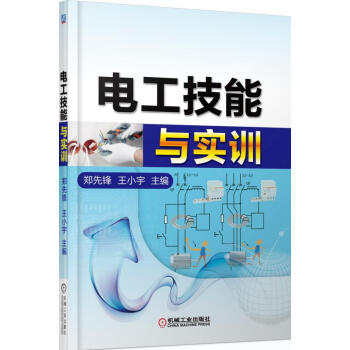
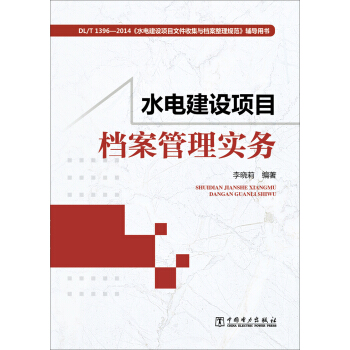
![飛行性能力學基礎 [Flight Mechanics Performance Basis] pdf epub mobi 電子書 下載](https://pic.tinynews.org/11786626/56220408N02bc35d4.jpg)

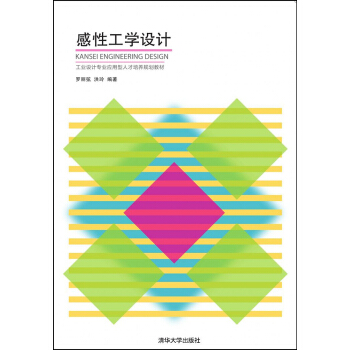

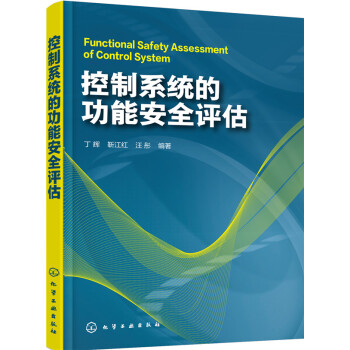

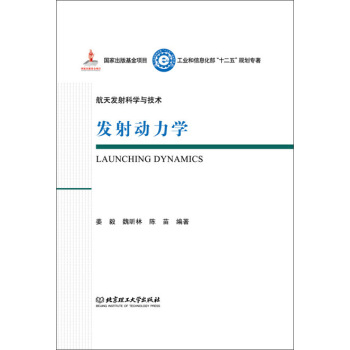
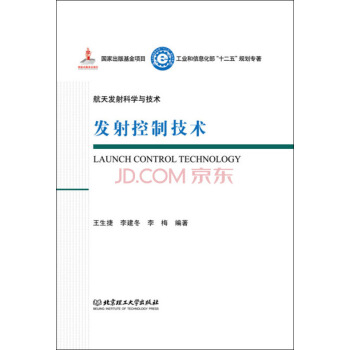
![國防科技著作精品譯叢 深空飛行器:行星際飛行概覽 [Deep Space Craft:An Overview of Interplanetary Flight] pdf epub mobi 電子書 下載](https://pic.tinynews.org/11839602/568a4372N82010573.jpg)

